2024 Bull Market List: The 10 best collector cars to buy right now
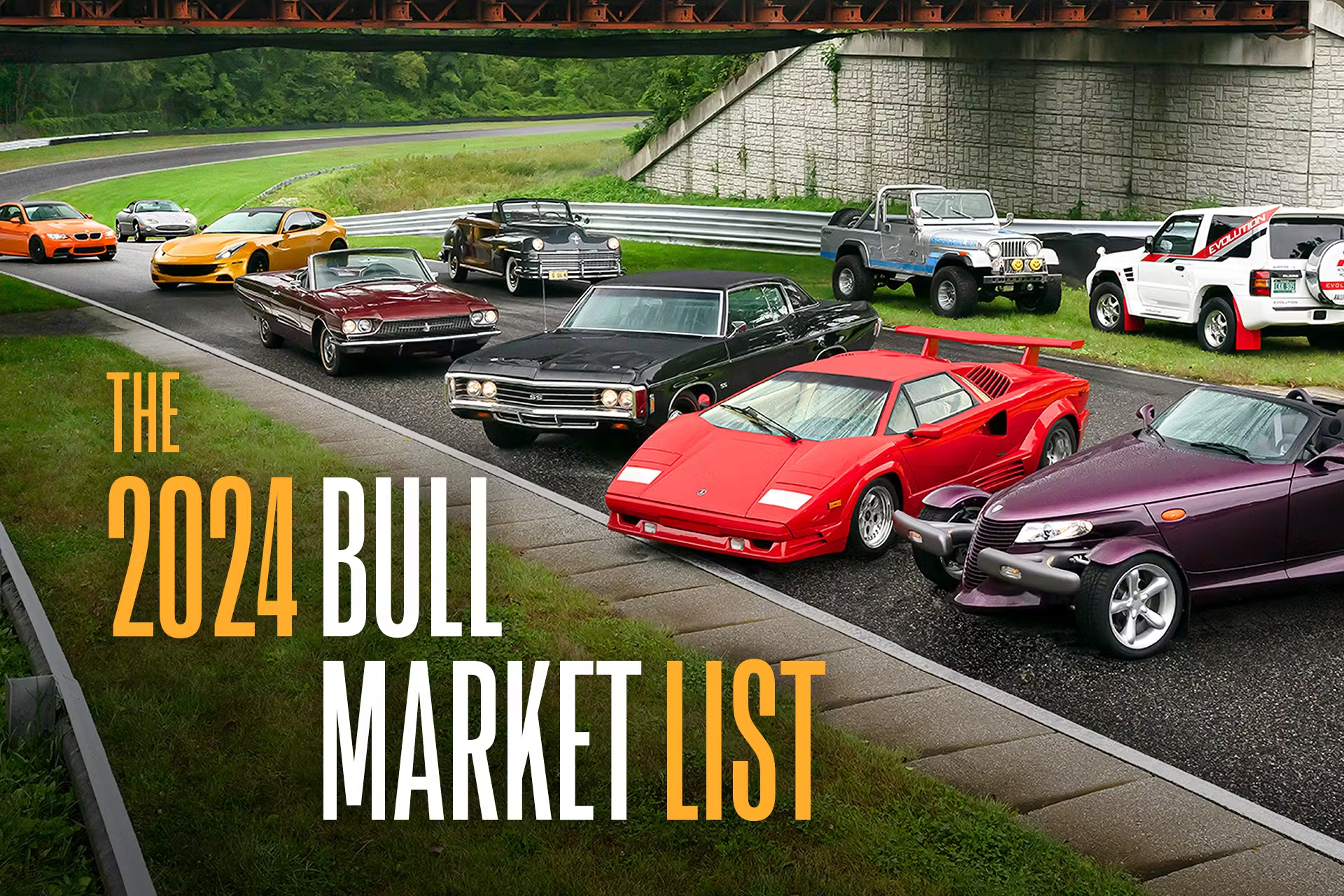
Welcome back to the Hagerty Bull Market List, our annual deep dive into the collector vehicles climbing the value ranks. This year, 2024, marks the seventh installment of our expert insights. Click to read past Bull Market Lists from 2018, 2019, 2020, 2021, 2022 and 2023.
You could be forgiven for thinking we’ve had it easy the past few years. The Bull Market List is our annual selection of vehicles likely to appreciate the most over the next 12 months, and amid the pandemic-fueled spending spree of 2021 and 2022, that was basically shooting fish in a barrel.
Things look a little different this year. Adhering to the most fundamental of investing principles—what goes up must come down—the collector car market as a whole softened in 2023. The Hagerty Market Rating, our monthly measure of the heat of the market, dropped to its lowest point in two years primarily due to inflation and declines in prices achieved at auctions.
Did that make us hesitate in our selections for 2024? Not at all. Even in a slowing market, there are vehicles poised for big gains. To identify them, we looked beyond top-line sales figures and dug into our trove of pricing and demographic data (for a detailed explanation of our methodology, click here). This year, we have everything from a 1940s woody to a 1990s rally truck originally sold only in Japan.
In any event, the point of the Bull Market List has never been to celebrate cars becoming more expensive or to position cars as investments. Rather, our goal is to make collector car ownership a bit more attainable and maybe a bit less intimidating by pointing out that with due diligence and a smidge of luck, you can get your money back and then some. So long as fun is your main goal, a classic car will never let you down.
Meet the Bulls: 2024 Lineup
- 1989 Lamborghini Countach 25th Anniversary
- 1946–1950 Chrysler Town & Country
- 2008–2013 BMW M3
- 1997–1999 Mitsubishi Pajero Evolution
- 2011–2016 Ferrari FF
- 2000–2005 Jaguar XKR
- 1965–1970 Chevrolet Impala SS
- 1981–1986 Jeep CJ-8 Scrambler
- 1964–1966 Ford Thunderbird
- 1997–2002 Plymouth Prowler
***
1989 Lamborghini Countach 25th Anniversary
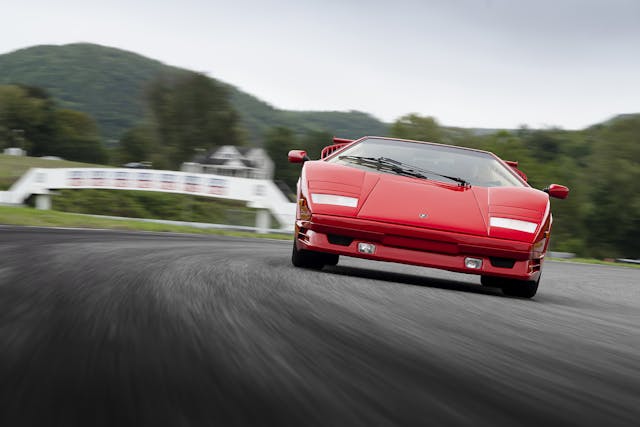
Rarely are sequels as good as the originals, but when Lamborghini replaced its groundbreaking and gobsmacking Miura with the even more outrageous Countach in 1974, the world bowed down to the sign of the bull. Although the car is a product of the 1970s, we tend to think of it as a child of the frizz-haired, neon-jumpsuited 1980s, thanks in no small part to cameo rolls in such period screen icons as The Cannonball Run and Miami Vice. And no version of the several Countach iterations represents that decade better than the final opus, the 1989-model-year 25th Anniversary, so labeled to celebrate the 1963 founding of Automobili Lamborghini.
Thanks to Chrysler’s purchase of the ailing automaker in 1987, much-needed cash flowed into Sant’Agata, and the Anniversary would prove to be, in many ways, the best Countach as well as the most produced, with around 650 examples cranked out in a relatively short period. The car’s long battle with U.S. safety and emissions laws was finally resolved with DOT-certified bumper grafts and EPA-blessed Bosch K-Jetronic fuel injection for the four-cam, 48-valve, 5.2-liter, 7000-rpm V-12 (Euro versions still had carbs). The rated 455 horses was the highest the Countach ever achieved.
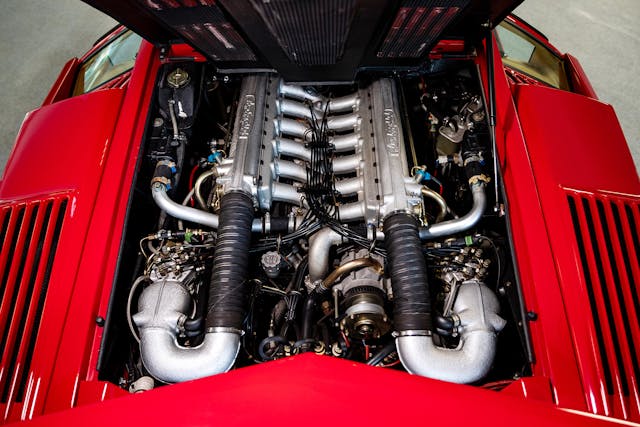
Composite body strakes meant to update the Countach’s styling—as though updates were needed—were developed by a young Horacio Pagani, who went on to start his own eponymous hypercar company. Power seats and a stronger air conditioner controlled by a digital panel were Anniversary touches that Chrysler undoubtedly thought necessary for a car stickering at $225,000. Despite the luxury flourishes, however, the Countach’s incandescent machismo was barely dimmed, and the lack of ABS or anti-spinout systems means it takes a certain fearlessness to hustle one anywhere near its limits. Feet squeezed into the tiny offset pedal box and hands gripping the small wheel and tall shifter face heavy resistance on all fronts. The visibility out is only slightly better than a gopher hole.
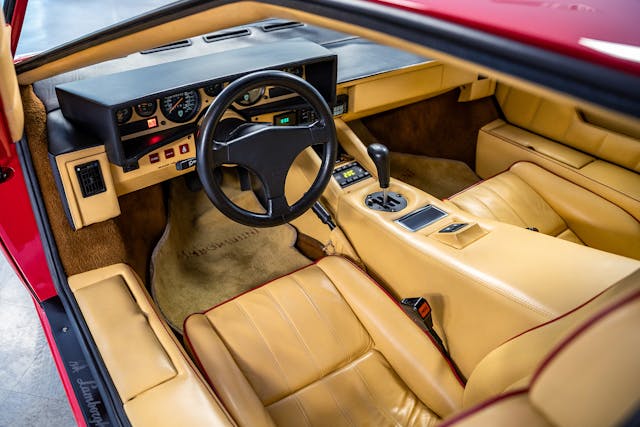
But driven with the proper measure of courage and skill, the Countach is a wailing wonder of sound and fury—at least until something breaks. Lamborghini’s greatest sex wedge has a well-earned rep for bleeding owners white, and with so many Anniversary Countaches having been driven hard and put away bent, it’s easy to fall into a bottomless pit of four- and five-figure repair bills. Owner Antonio Marsillo, a former New York City police detective who started a successful business offering VIP protection services (past clients include Michael Jackson, Paul McCartney, Bon Jovi, and Jim Carrey), searched for four years, rejecting as many as 20 cars before finding this 4000-mile unmolested gem in 2013.

That was back when used Anniversaries were at the bottom of their steep depreciation curves. And right before the film The Wolf of Wall Street graphically sacrificed one on the altar of cinematic art, sending Anniversary prices rebounding. They have only continued to build steam. Marsillo parks his in a one-car garage on a lift underneath his other 1980s hero car, a Ferrari Testarossa that once belonged to Billy Joel. He has spent far more time detailing the Lamborghini’s exhaust and undercarriage with a toothbrush than he has driving it, and it is subsequently the best preserved Countach we have ever experienced, barking to life on the button and showing no evident signs of its 35 years. Simply bawdily bellissima! —Aaron Robinson
1989 Lamborghini Countach 25th Anniversary
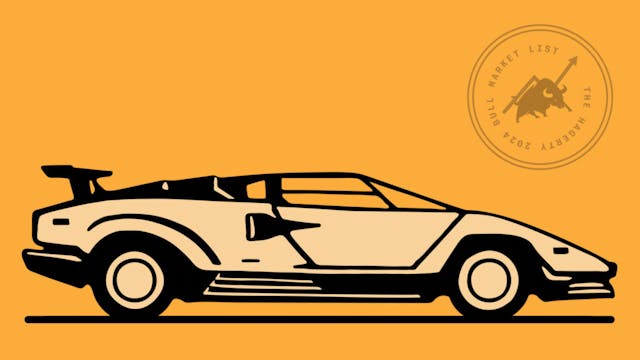
Highs: A genuine icon with a 7000-rpm V-12; those crazy doors; your chance to meet dozens of strangers every time you stop.
Lows: A workout to drive; has put lots of children of mechanics through college; your chance to meet dozens of strangers every time you stop.
*Price Range: #1 – $770,000 #2 – $612,500 #3 – $435,000 #4 – $345,000
*Hagerty analysts evaluate vehicle condition on a 1-to-4 rating scale to help determine its approximate value range. All factors, including aesthetics and mechanical condition, are considered. Most collector vehicles are in #3 (Good) condition. Read more about our rating system here.
HAGERTY AUTO INTELLIGENCE SAYS:
Not long ago, ‘serious’ collectors considered the later Countach, with its scoops and cladding, to be a bastardization of an iconic design. But the children of the 1980s and ’90s think otherwise. Although 1970s examples are still worth the most, the final-year Silver Anniversary edition is gaining ground.
***
1946–50 Chrysler Town & Country
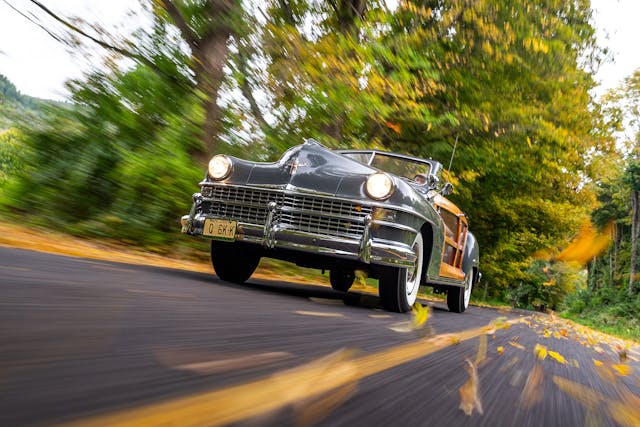
The war was over and the troops were flooding back desperate to buy cars. Chrysler Corporation, which had been cranking out tanks, trucks, engines, and munitions, turned to face the future, and the future was wood. Or, at least, Chrysler president David Wallace thought so. It helped that Wallace was also president of Pekin Wood Products, a Chrysler subsidiary in West Helena, Arkansas, that had spent the war making shipping crates for aircraft engines. Pekin had supplied the ash and Honduran mahogany for the very first Chrysler Town & Country, a spectacular 1941 woody wagon so named because its chrome-rococo face said “Hello” while its cavernous barrel-back rear said “Howdy.”
However, when Chrysler belatedly went back to building cars late in 1945, delayed because of strikes and raw materials shortages, the Town & Country wagon was gone. In its place, the company offered a few gussied-up versions of the 1942 New Yorker, including a Town & Country sedan, a T&C convertible, and one of the industry’s first two-door pillarless hardtops, which was basically a T&C convertible with a roof bolted on.
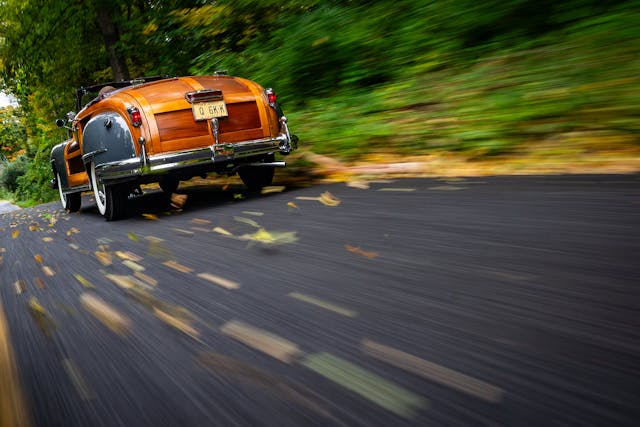
At nearly $3000, the pricey Town & Country was an odd mashup of 1940s streamlining and rectilinear right angles. And though it was never built in huge numbers—fewer than 15,000 between ’46 and ’50—it was immediately embraced by East Coast patricians and West Coast Hollywood types as a rolling status symbol. Who else but the rich could afford a car that evoked the Stickley-style and art deco furniture of the finest houses while, according to the owner’s manual, needing to be revarnished every six months to preserve its exterior?
Initially the T&C’s ash framing was structural, comprising the doors and trunklid and held together via complex joinery that no doubt taxed Chrysler’s Jefferson Avenue body assembly shop as much as it has restorers in the years since. However, the weight of the car’s cost and build complexity (at a time when anyone would buy anything new at any price) bore down, and by 1949, the ash was merely decorative, bonded to a conventional steel body shell and accented by fake vinyl mahogany.
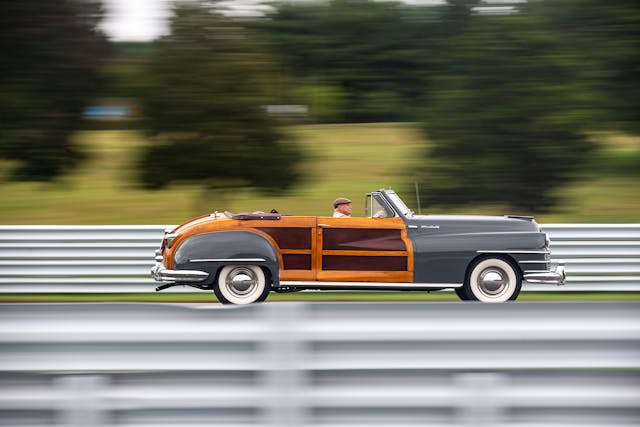
David Kraus didn’t set out to buy a Town & Country, exactly—he set out to buy a convertible. Any convertible would do, and this ’47 T&C was priced right at $200. Did we mention that this was back in 1965? Kraus, now a retired aviation lawyer from northern New Jersey, spent a few years and another $800 painting the car, redoing the top, and restoring the interior, and he has been happily motoring in it ever since. Still original are the 324-cubic-inch flathead straight-eight and Fluid Drive four-speed, a kind of semi-automatic that takes much longer to explain than it does to learn how to use it. You sit up high in the T&C and roll in velvety if not speedy comfort, the engine seeming to operate only between a low idle and a high idle. For years, the winners of the Miss Arkansas pageant rode in the back of T&Cs in parades, and that is perhaps the best use of any Town & Country. —Aaron Robinson
1947 Chrysler Town & Country

Highs: Everyone loves a woody; A piece of art deco furniture you can drive; America’s favorite parade car or fun for six on a night out at the drive-in.
Lows: Built before Eisenhower’s interstates and geared like it; the wood is difficult to restore and maintain; restorations are financial sinkholes.
Price Range: #1 – $144,000 #2 – $81,400 #3 – $52,500 #4 – $28,400
HAGERTY AUTO INTELLIGENCE SAYS:
There’s a theory that young enthusiasts only want newer cars. Our data show that’s dead wrong. The best older classics, like the T&C, will endure. But find a good one, as restoring a 70-year-old wood-bodied car can be costly.
***
2008–13 BMW M3
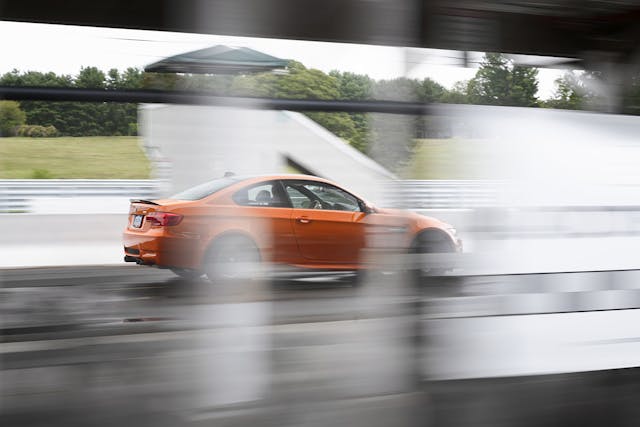
If you want a visceral sense of the je ne sais quoi, the undefinable feeling that makes collectors go gaga over so-called modern classics, drive a 2007–2013 M3. No need to go very far or very fast. After the 4.0-liter V-8 has warmed up—you’ll know because the electronic redline on the tachometer automatically raises from about 6000 rpm to 8400 rpm—give the gas pedal a tap. Just a tap. In about the time it takes your thought to travel from your brainstem to the fast-twitch muscle fibers in your foot, the car lunges forward. A modern M3, which is powered by a turbocharged six-cylinder with some 100 more horsepower, may well be quicker, but it feels nowhere near as immediate or responsive.
It’s tempting to describe this experience as analog, yet this M3—or E92 in BMW chassis-code parlance—was a technological tour de force, from its carbon-fiber roof to its adjustable rear differential and optional dual-clutch automatic. The engine was the first (and, so far, the last) V-8 offered in an M3, but it weighs less than the inline-six in its predecessor thanks to extensive use of aluminum. Each cylinder has its own throttle controlled by a separate electric motor—the 21st-century version of a rack of Weber carburetors. It all conspires to make this era M3 feel exotic, even if it looks for the most part like a workaday 3-Series. (Design chief Chris Bangle’s avant-garde “flame surfacing” was wisely kept to a minimum on this bread-and-butter model.)
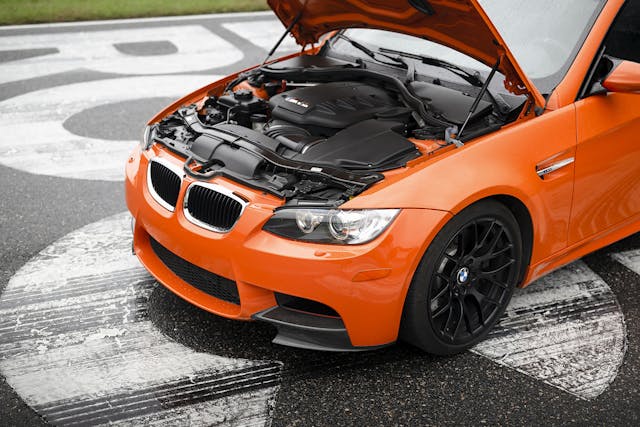
Despite the E92’s sterling performance credentials, it depreciated swiftly. By 2018, excellent examples were going for less than $40,000, according to the Hagerty Price Guide—chump change considering the window stickers commonly exceeded $70K with options. Like many tech-forward German performance cars of the early 2000s, the M3 became cheap to buy in large part because it is expensive to own. In addition to swilling premium (an EPA-rated 14 mpg in city), the engine’s electronic throttle actuators are known to fail—there are two, one for each cylinder bank. Also, the bearings that protect its fast-spinning connecting rods can wear prematurely.
Yet there are multiple signs that this generation M3 is leaving “used performance car” territory for the rich green pastures of “modern classics.” Interest in the car, as measured by the number of people who call Hagerty about insurance on them, is increasing. These M3 seekers are disproportionately Gen Xers or younger—a cohort that has driven huge increases on other modern performance cars in recent years. Those include the 2000–2006 BMW E46 M3, now valued at a cool $54,300 in our price guide, as well as early 2000s (996- and 997-generation) Porsche 911s, which trade for similar money or higher.
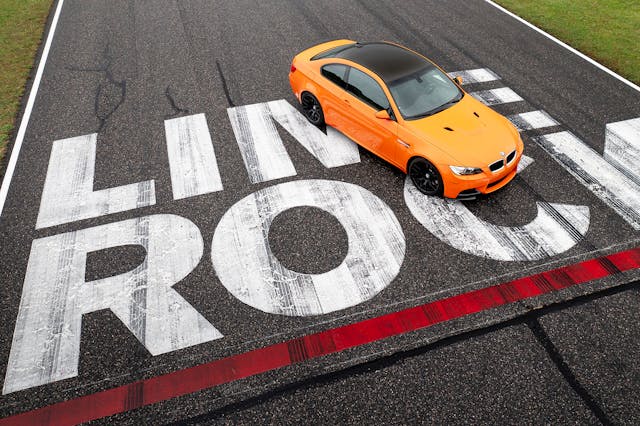
Values for M3 sedans and coupes in excellent condition have already made their way above $40,000. Those equipped with manual transmissions tend to net a premium, as do limited-build Lime Rock Park Editions like the one we borrowed from Hagerty member Darren Berger, as they combine several desirable performance options. If you want to hear more of the V-8 and can stand added weight, convertibles (technically called E93s) sell for slightly less. Yet the most important feature to look for when buying an M3, in light of the noted mechanical complexity, is a comprehensive service history. —David Zenlea
2013 BMW M3
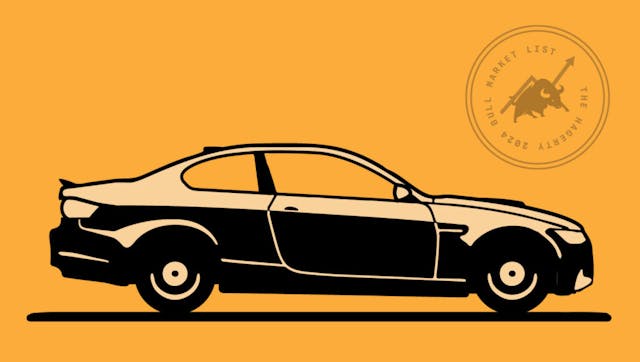
Highs: Engine nearly befitting of an exotic; peak BMW chassis balance.
Lows: Conservative styling; poorly maintained examples can cost an arm and a leg to fix.
Price Range: #1 – $65,800 #2 – $51,600 #3 – $40,600 #4 – $29,200
HAGERTY AUTO INTELLIGENCE SAYS:
Interest from young enthusiasts is a factor for all Bull Market cars but is absolutely the factor favoring this M3. The ‘kids’ are not only shopping for the car but are also consistently willing to pay more for it than older folks. Meanwhile, the aftermarket has come up with fixes for many of the mechanical/durability issues.
***
1997–99 Mitsubishi Pajero Evolution
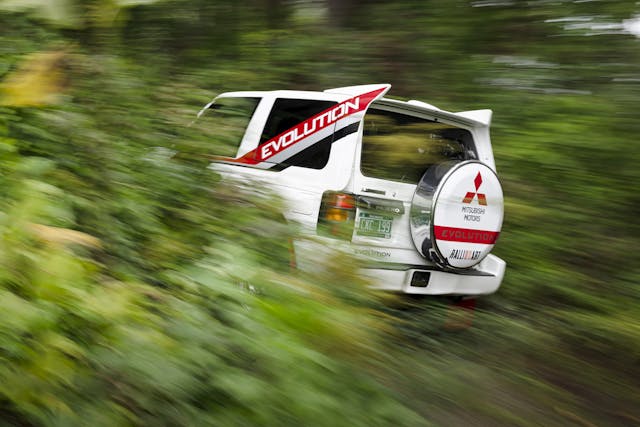
And now for something completely different: a Japan-only off-road rally special built around a commonplace SUV and styled to look like the Bat Truck. People who aren’t ready for a deep dive into the nerdy world of Japanese Domestic Market specials can stop here; for the rest, konnichiwa!
It has been a long time since Mitsubishi dominated anything, but the three-diamond brand once ruled the brazen and dangerous 6000-mile-long Paris-Dakar Rally, with a string of wins in the 1990s and 2000s using modified versions of its Toyota Land Cruiser fighter, the Pajero SUV (Montero in the U.S., Shogun in the U.K.). As with a lot of interesting cars, the Pajero Evolution was born in a smoky backroom of a motorsports sanctioning body. In the mid-1990s and with the Dakar at its peak in popularity, the organizers created a production-based class requiring manufacturers to build a minimum number of homologation cars that had to be road-legal and salable to the public. Mitsubishi was down to party, producing about 2500 of the Pajero Evolutions, which shared basic sheetmetal with the second-generation (1991–1999) body-on-frame two-door Pajero/Montero. (Side note: America never saw two-door versions of the gen-2s, or indeed the gen-3s, owing to the so-called chicken tax, a 25 percent U.S. duty on imported two-door trucks.)
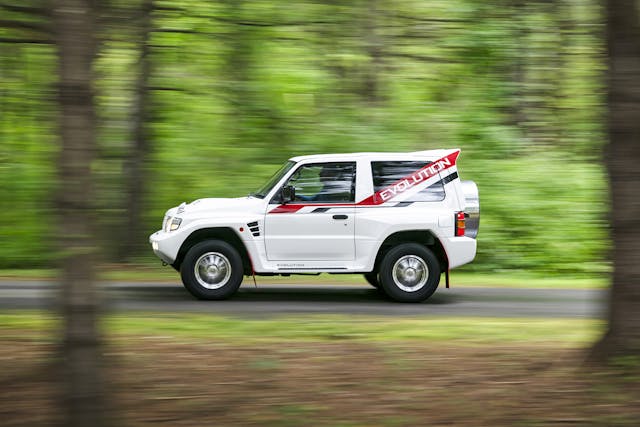
Underneath, there’s lots of special geekery for JDM geeks to geek out on, including a 276-hp version of Mitsu’s iron-block 3.5-liter V-6 running four-cam cylinder heads, the company’s MIVEC variable valve-timing-and-lift system, and gasoline direct-injection. Further, the stock Pajero’s torsion-beam front suspension and solid-axle rear were replaced with double wishbones in front and multilinks in back, with Torsen lockers at both ends. Special Recaro buckets, skid plating, more butch front fenders, and body cladding complete the Evo’s persona.
If you’ve ever driven a U.S.-spec gen-2 Montero—your author has owned two—then you know that these ships of the desert are sturdy but not exactly frisky. However, shorn of almost a foot of wheelbase compared with the four-door and blessed with nearly a third more horsepower, the Pajero Evolution achieves genuine sportiness. Quicker steering paired with a carlike chassis awakens the handling, while the power can be managed through a manual-shift function of the automatic that is unique to the Evo (a true manual was also available, but they are very rare).
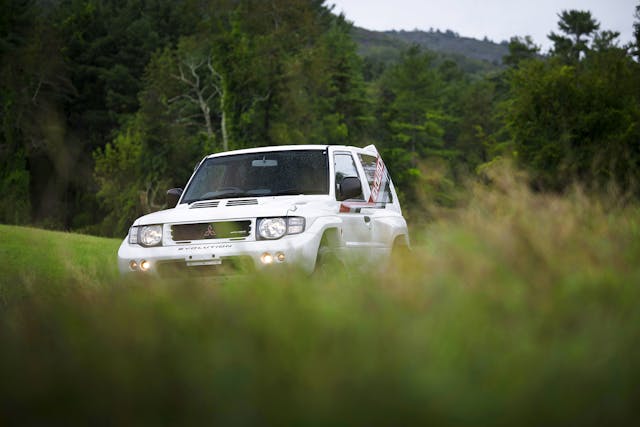
Thanks in part to a long association between Mitsubishi’s Ralliart operation and martial arts superstar Jackie Chan, Pajero Evos have always been collectible in Japan. And now that the 25-year rolling import exemption is up to 1999, they are dribbling into the U.S., though they are still impossible to legally register in some states (we’re looking at you, California). Of course, coddled rally specials such as the Pajero Evo are less about what they can do—few Evos have likely ever tasted dirt—than about the conversations they spark. If you fancy driving a rolling billboard advertising your arcane knowledge of Japanese automotive esoterica, then your Bat Truck has arrived. —Aaron Robinson
1997 Mitsubishi Pajero Evolution

Highs: There’s no kind of cool like JDM cool; handles far better than your typical SUV; a rolling piece of (obscure) motorsports history that can also carry a sheepdog.
Lows: Lots of money that will buy respect from only a select few; aging Japanese cars tend to have slim parts availability in general; likely has quite a few bits of unobtainium.
Price Range: #1 – $70,000 #2 – $50,000 #3 – $35,000 #4 – $17,900
HAGERTY AUTO INTELLIGENCE SAYS:
Japanese Domestic Market cars were once unobtainable for all but the most determined enthusiasts due to the logistics of importing them. In recent years, though, as more millennials look to make their video game dreams reality, a cottage industry has cropped up to bring JDM cars stateside.
***
2011–16 Ferrari FF
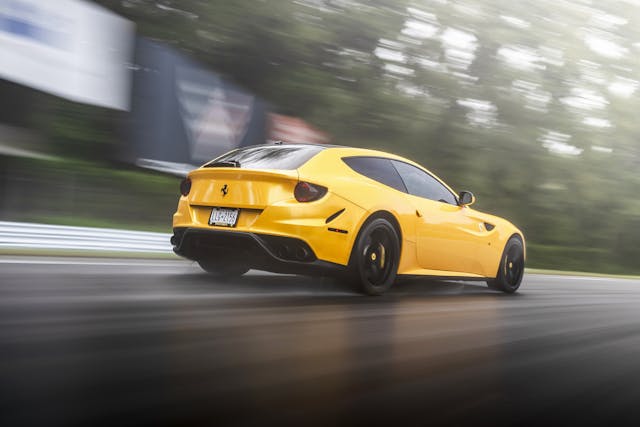
Several philosophers and at least one Doobie Brothers album have observed that vices, if repeated enough, have a way of becoming acceptable habits. That’s one way—just a bit cynical, we’ll admit—to explain why we’re bullish on the Ferrari FF.
When the car debuted a little over a decade ago, the notion of an Italian exotic with all-wheel-drive, four seats, and no clutch pedal still seemed a bit transgressive. Since then, nearly every premium automaker—including Bentley, Lamborghini, Rolls-Royce, and even Ferrari itself—has developed a fully fledged SUV. This lithe and low-slung shooting brake is, by comparison, a purist’s delight.
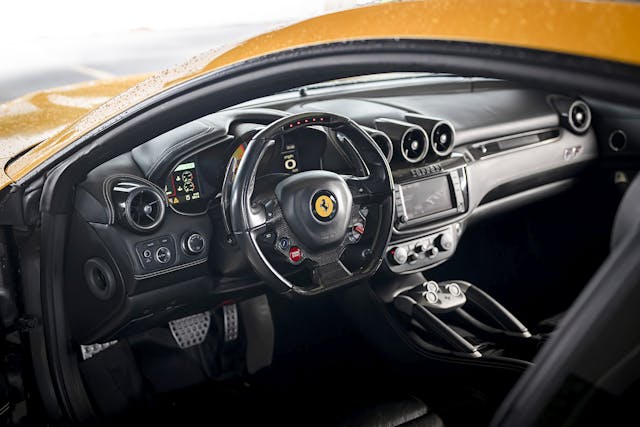
The simple truth is that more and more car buyers expect some utility, even in their passion purchases. This became particularly evident during the pandemic, when collectors zealously snapped up vehicles capable of going on longer drives with more passengers. Everything from vintage SUVs to restomods (classic cars with modernized powertrains and brakes) shot up in value as a result. There are also long-term demographic trends at play. Collectors who are Gen Xers or younger now make up the majority of the market and are more likely to have kids at home, jobs to commute to, and stuff to haul. They want their classic cars to be, you know, cars—capable of ferrying people and things from place to place without fuss.
These are overwhelmingly the folks buying FFs. More than 80 percent of those who call Hagerty about insurance on one are Gen Xers or younger, and they tend to drive many more miles than we see for other Ferraris. The owner of the FF you see here, Daniel Giannone, readily admits he wanted an enthusiast car in which he could take his young children on Sunday drives.
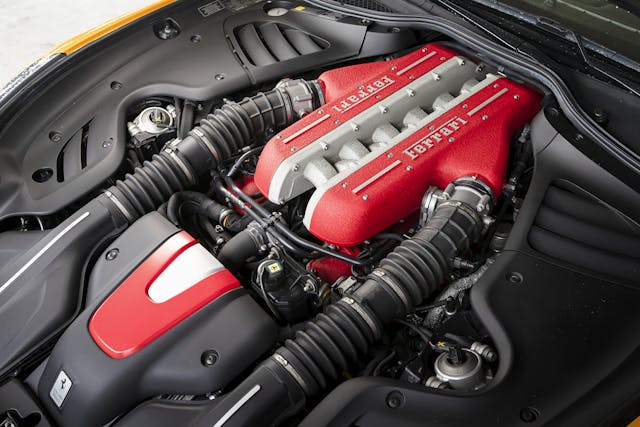
Yet there’s one more thing about the FF that needs to be taken into consideration: It’s a Ferrari. There’s a mystique that comes with the Prancing Horse that usually translates to appreciation, both for the vintage Enzo-era cars and, increasingly, for more recent efforts. In the past few years, we’ve seen run-ups and record sales for everything from F50s and Enzos to 612 Scagliettis. The FF, despite its practicality, maintains that invaluable Ferrari-ness. Its naturally aspirated V-12 puts out 651 horsepower—more than an Enzo’s—and makes all the right noises. The seven-speed dual-clutch automatic works seamlessly, with none of the herky-jerky annoyances of Ferrari’s earlier sequential gearboxes. The all-wheel-drive system, which powers the front wheels via a novel two-speed transmission, kicks in when needed but otherwise doesn’t intrude on the experience. Not everyone loves the Pininfarina styling—particularly the jack-o’-lantern smile of the grille—but the basic proportions are just right.
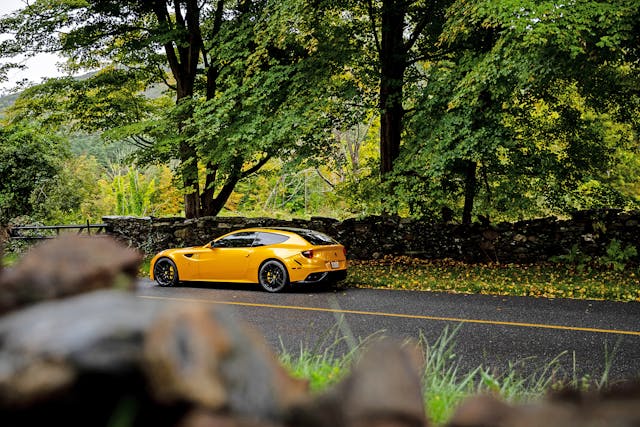
FFs are nearly new, so they are still depreciating and presently can be had in excellent condition for less than $150,000, a bargain considering they stickered around $300,000. You’ll want one that’s been fastidiously maintained—we are, after all, talking about an Italian exotic with 12 cylinders and two transmissions. But a properly cared for FF should provide years of practical fun and, if the Doobie Brothers are correct, long-term appreciation. —David Zenlea
2014 Ferrari FF
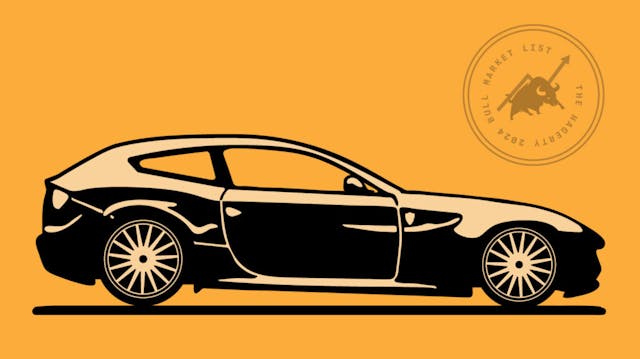
Highs: Grocery-getter practicality with the heart of a supercar.
Lows: There are prettier Ferraris; AWD service is pricey.
Price Range: #1 – $177,000 #2 – $143,000 #3 – $125,000 #4 – $106,400
HAGERTY AUTO INTELLIGENCE SAYS:
Two of the most striking changes in the classic car market in the past decade have been an influx of younger buyers and a shift in preference toward ‘usable’ vehicles. The FF, with its youthful demographics and practicality, checks both boxes. The fact that it’s a Ferrari (a relatively rare one at that) certainly doesn’t hurt.
***
2000–05 Jaguar XKR
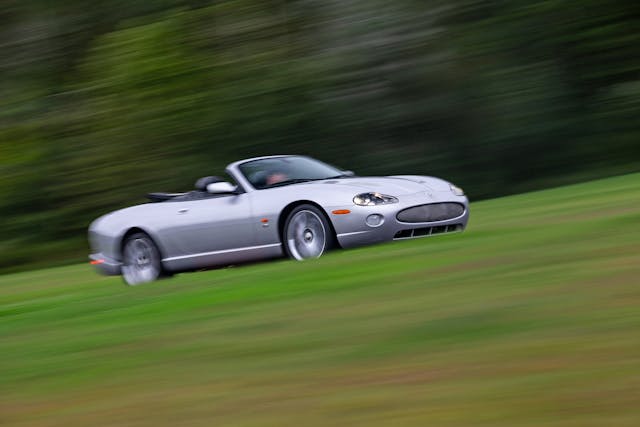
The Ford Motor Company purchased Jaguar in 1989 and began brushing the cobwebs out of the British carmaker’s assembly hall at Browns Lane. Dearborn emissaries laid plans for long-overdue updates to the XJ sedan and XJS two-door. Although markers of country club status, the Jags were known in the wider culture as being reliably unreliable, a situation made increasingly untenable by the arrival of Lexus and its world-beating quality.
So the next generation of Jaguar’s two-door, the brand’s image leader, had nowhere to go but up. Design chief Geoff Lawson penned a low, lovely, and sleek grand tourer whose oval snout evoked the E-Type even as the overall design was pointed squarely toward the 21st century. Take that, upstart luxury brands from the Far East! Instantly identifiable as a Jaguar by even casual observers, the 1997 XK8, named for the postwar XK 120/140/150 line, was exactly the car Jaguar desperately needed, and not a moment too soon: The XJS had been on the market, largely unchanged, for more than two decades.
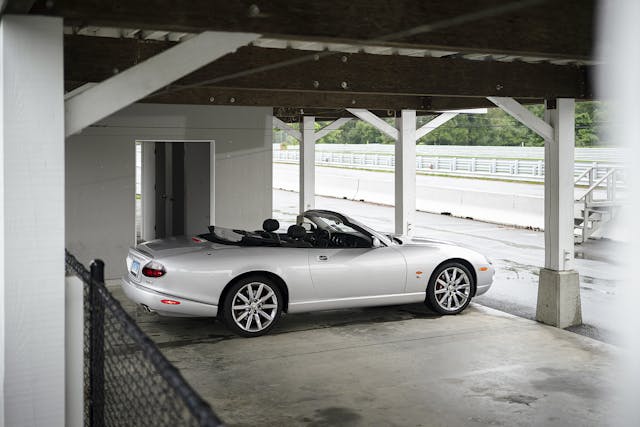
The XK8 team had to make do with a heavily modified XJS platform, but Ford had funded a bespoke engine for Jaguar rather than repurposing the DOHC V-8 being developed for Lincoln and Ford. Displacing 4.0 liters, the same as the Lexus V-8, Jaguar’s DOHC aluminum AJ-V8 replaced Jaguar’s inline-six and sent 290 horsepower and 284 lb-ft of torque through a five-speed ZF automatic transmission.
Compelling, but Jaguar had more plans for its first-ever V-8 engine, attaching an Eaton supercharger to supplant the previous optional V-12. The resulting XKR debuted for the 2000 model year with a mesh grille insert, 370 horsepower, and a swagger not seen out of Coventry in decades. With both the XJR sedan and the XKR, Jaguar was finally able to compete with the high-performance models from Mercedes, BMW, and even Aston Martin.
Automotive critics were thrilled for Jaguar as it came out swinging against the German and Japanese brands. “Just look at Jaguar’s XKR. It’s sex on wheels!” enthused Car and Driver. “A lot sexier than the naturally aspirated XK8 upon which it’s based… provocative, confident, not at all trashy, with an upper-class British accent.” At about $80,000 for the coupe and $85,000 for the convertible, the XKR was not cheap, but it still undercut the V-12 Mercedes-Benz SL600 roadster by tens of thousands.

Looks aside, the XKR twins were rapid and refined steeds, the AJ-V8 delivering gobs of low-end torque and smoothly powerful acceleration with a muffled supercharger whine. Car and Driver clocked the run to 60 mph in 5.2 seconds. The XKR’s Computer Active Technology Suspension (CATS, get it?) provided the composure and comfort Jaguar is famous for along with reasonably sporty handling. Our photo car, owned by Bob Levy of Westport, Connecticut, is a 2006 model, meaning it benefits from the larger, 4.2-liter AJ-V8 mated to a six-speed gearbox that Jaguar introduced in 2002.
Today, good examples of the XKR can be had for the low $20,000s—not bad for styling that has aged well and for one of the world’s great V-8s. Driving an XKR reminds us of hope and promise, an era when Ford’s billions combined with British resolve to reinvigorate one of the greats. —Joe DeMatio
2006 Jaguar XKR
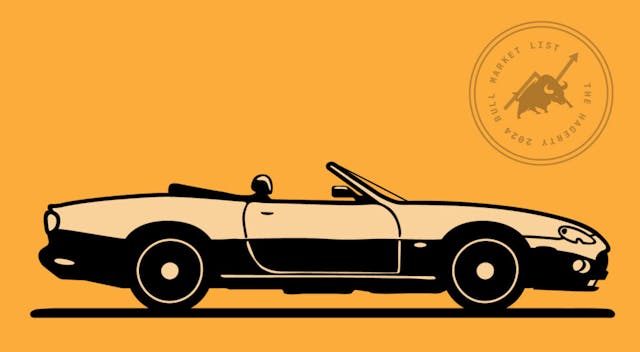
Highs: Silky-smooth supercharged V-8; sensuous good looks, particularly the rare coupe; as cheap as a used Camry.
Lows: Cramped cabin; back seats for groceries only; many were used hard; maintenance records are essential; no manual gearbox.
Price Range: #1 – $38,900 #2 – $26,700 #3 – $16,100 #4 – $8300
HAGERTY AUTO INTELLIGENCE SAYS:
The most important data points here are pretty simple: power and price. Enthusiasts of all ages love performance, and there aren’t many cars that offer more of it for less money. Cost of maintenance and repair must always be a consideration with Jaguars, but the XKR—relatively speaking—has proven reliable.
***
1965–70 Chevrolet Impala SS
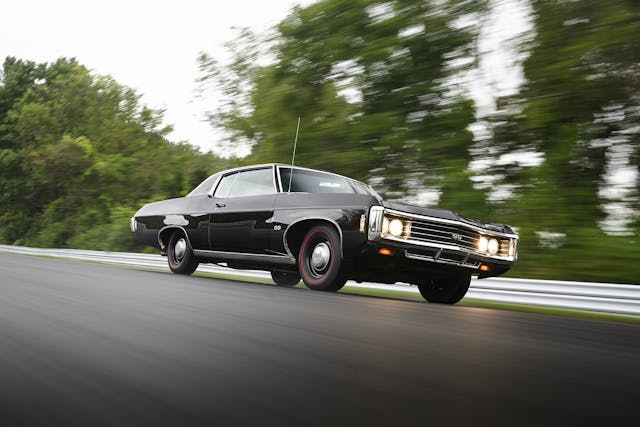
If there is nothing more American than baseball, hot dogs, apple pie, and Chevrolet, then it’s quite possible that there is no car that is more Chevrolet-y than the Impala. Named after a type of African antelope, the name first appeared in 1956 on a General Motors Motorama show car, a handsome, four-passenger sport coupe with Corvette-inspired design cues. In 1958, the Impala was introduced as the top-of-the-line model for the bowtie brand. Over the next six decades and 10 generations, Impala was Chevy’s full-size offering, until the market’s insatiable appetite for crossovers and SUVs brought an end (or a pause, perhaps?) to the nameplate in 2020.
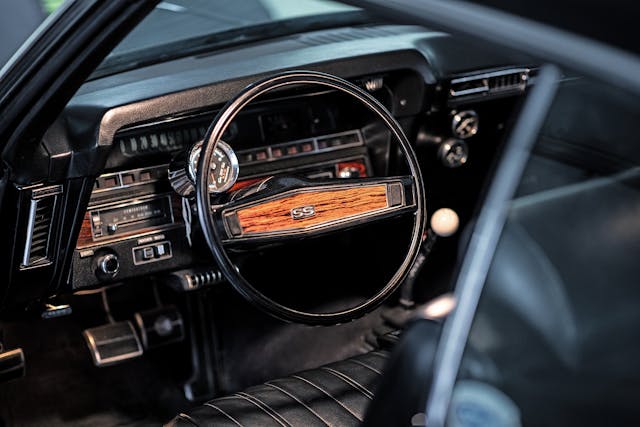
The scene looked much different in 1961, when Chevy debuted the SS (Super Sport) option as the Impala’s performance package. With either the 348-cubic-inch V-8 or the legendary 409 serving duty under the hood, the Impala SS was a performance powerhouse. The fourth-generation, all-new Impala was introduced in 1965; that year, the model’s annual sales hit an all-time industry record of more than 1 million cars. (For context, total sales across all GM divisions in 2022 was 2.27 million). The Impala was rebodied in 1967, and from ’67 to ’69, the top engine was the 427. The 1969 LS1 427 V-8 on base Impalas made 335 horsepower (measured by the old, inflated SAE gross-output yardstick); on SS models, the L36 V-8 made 390 ponies, while the ultra-rare L72—of which only 546 were sold—made 425 horsepower.
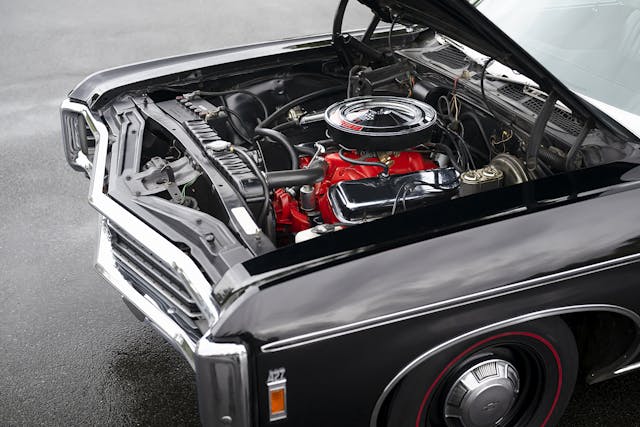
The example on these pages is a ’69 Impala SS L36 paired with a four-speed manual. The car is owned by Hal Oaks, who bought it new in 1969. “I had a ’65 Chevy Super Sport with a 283 that couldn’t get out of its own way,” Oaks remembers. “I was 19, I had a full-time job, and I decided I wanted something new. I was a Chevy guy, so I went to the Chevy dealer looking for an L79 Nova. The only one the dealer had was Nassau blue, and I really didn’t like that color. I went back the next day, and I was still undecided. The salesman said, ‘I got one more car to show you. We ordered it for someone who decided they didn’t want it.’ That was the black car that I still have today.”
Behind the wheel, you can roll at 35 mph in fourth gear with no problem thanks to the drag-race gearing and buckets of torque cranked out by the 427. The engine sounds great as it exhales through the tubular headers and 2.5-inch pipes and mufflers that Oaks installed. As with most of the cars of that era, there is no pleasure to be found in operating the vague gear shifter. The steering is similarly ambiguous, which is fine, since the grip-free bench seats that were standard for ’69 discourage anything except straight-line driving.
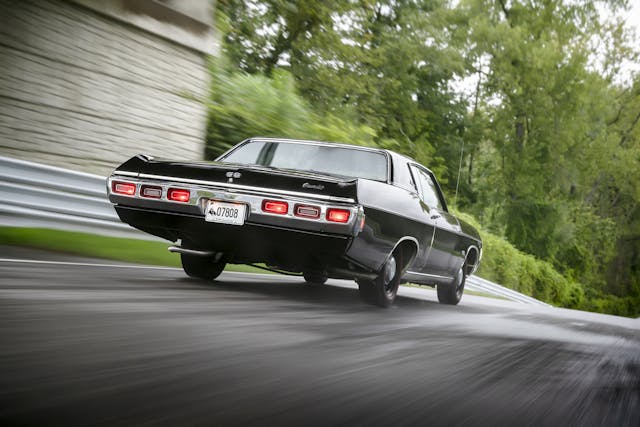
Over the course of the 55 years that Oaks has owned the Impala, it has become a part of the family. “I drove it to my wedding, and I drove both of my daughters to their weddings in it, too,” he reflects. “Through the ups and downs of life, raising a family and building a house and buying houses, somehow I managed to hang on to it. I’ll never sell it.” —Kirk Seaman
1969 Chevrolet Impala SS
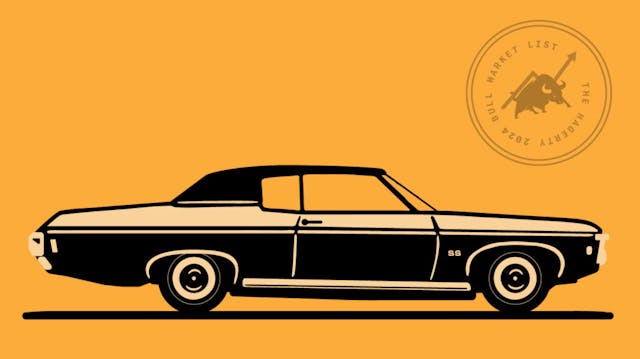
Highs: Perhaps the most American of American cars; parts aplenty; cruise night or the drags—it does both.
Lows: Needs a big garage; ‘60s fuel appetite; likes straights more than curves.
Price Range: #1 – $44,500 #2 – $30,100 #3 – $22,200 #4 – $14,600
HAGERTY AUTO INTELLIGENCE SAYS:
Young enthusiasts love American muscle as much as their parents do but generally don’t have the cash for the most famous models. That leads them to alternatives, including this Impala.
***
1981–86 Jeep CJ-8 Scrambler
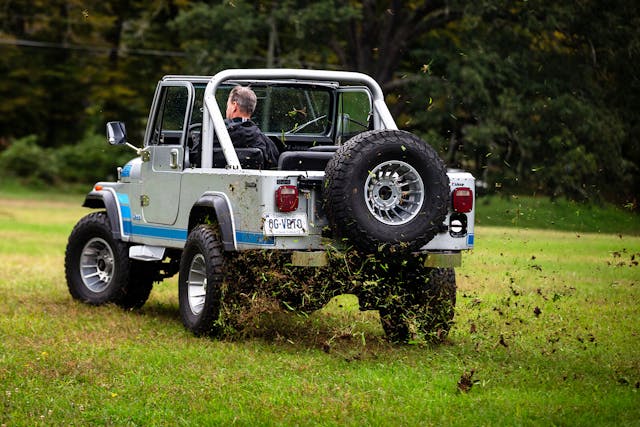
The love child of the sturdy Jeep CJ-7 and a pickup truck, the CJ-8 was a long-wheelbase version of the CJ-7 that combined the go-anywhere-ability of the CJ (“civilian jeep”) with the utility of a cargo bed. Produced by American Motors from 1981 to 1986, fewer than 30,000 CJ-8s sold, appealing to a small sliver of the market that appreciated the virtues of four-wheel drive paired with open-air motoring and a 1500-pound payload.
Often called the Scrambler (the name of a popular trim package), there wasn’t a lot of scrambling going on here, what with the anemic 82-hp, 2.5-liter Iron Duke four-cylinder sourced from General Motors under the hood. In 1984, AMC upgraded that base four-cylinder to its own 2.5-liter four, good for 105 horsepower. The legendary 4.2-liter inline six-cylinder was offered as an option, making 115 horsepower but, more important, cranking out 210 lb-ft of torque at 1800 rpm. Transmission choices were either a four-speed manual or a three-speed automatic; in 1985, a five-speed manual was available.
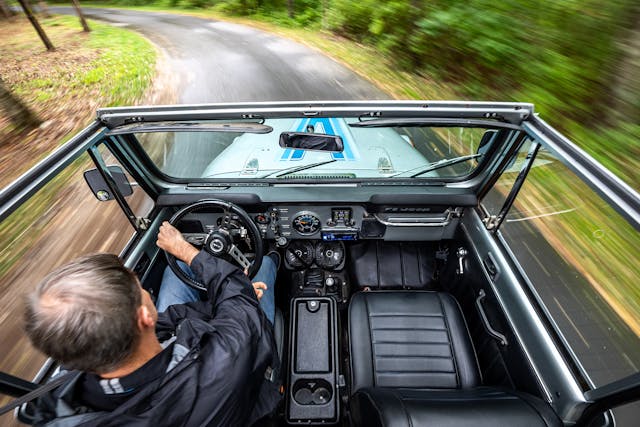
Early adopters of the Scrambler included Ronald Reagan, who received his as a gift from wife Nancy and used it to maintain their ranch outside Santa Barbara, California. About the same time the Gipper was using his CJ-8 to clear the brush on his ranch’s horse trails, our owner, Andrew Del Negro, fell in love with one as a sophomore in high school. “The passion came from my first Jeep experience when my parents moved me from Connecticut to Tennessee. I didn’t know anybody at the new school,” he recalls. “The first friend I made there had a ’76 CJ-5, and he and I took that thing everywhere.”
Del Negro’s own Jeep journey began with a ’77 CJ-5. “It had a 304 with headers and glass-pack mufflers,” he enthuses. “It was loud, it was badass.” Since then, Del Negro estimates he has owned between 30 and 40 Jeeps. “Between CJs, Cherokees, Grand Cherokees, Commanders, I’ve had everything. When I got married, my wife and I had pictures of every Jeep that I had owned to that point as the centerpieces on our guest tables.”

His current passion is this 1983 Scrambler that he bought in 2021. “This Scrambler was my dream vehicle. I wanted this specific color scheme and one that wasn’t perfect but original and in nice shape.” He found this rust-free example in California and set out to make it his own. “I’d always wanted a 360 V-8, so I had one installed and added fuel injection, then put on a set of Western turbine wheels.” Today, Del Negro cruises town and uses it to take the kids to soccer; he taught the oldest of his four children to drive a stick on his YJ Jeep, so they’re ready to drive the Scrambler with its four-speed manual. “They’re all dying to get into the Scrambler and drive it. They all love the Jeep.” —Kirk Seaman
1983 Jeep CJ-8 Scrambler
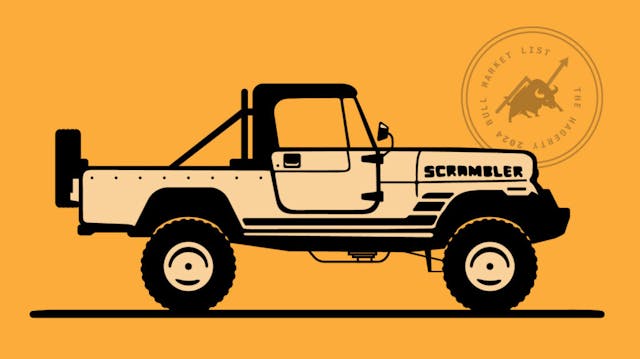
Highs: Irresistible Tonka-Toy looks; utility with invincibility; rare and collectible 4x4s are hot.
Lows: Anemic base engines; not waterproof; creaky body structure.
Price Range: #1 – $52,600 #2 – $41,400 #3 – $31,700 #4 – $16,100
HAGERTY AUTO INTELLIGENCE SAYS:
Off-roaders have been some of the hottest vehicles on the market in recent years. The Scrambler, given its distinctive configuration and rarity relative to regular Jeeps, has room to continue growing.
***
1964–66 Ford Thunderbird
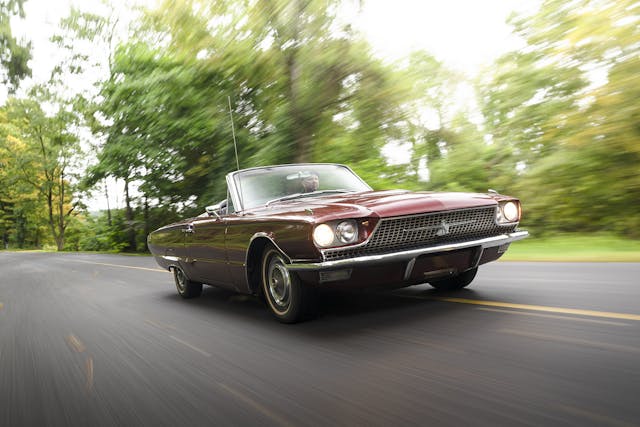
Thunderbird, you are go for liftoff. Climb into the cockpit and you might imagine yourself at the controls of an Apollo moon module or a starfighter straight from sci fi. Thunderbirds have had a strong tie to the jet age from the beginning. The first Baby Birds, the four-seat Square Birds, and the early ’60s Bullet Birds all had large, round booster taillights and wings that made them look like they could take flight. But those ’Birds were heavily influenced by an earlier fins-and-chrome aesthetic. This 1966 Thunderbird, a so-called Flair Bird, is planted firmly in the straight-edge 1960s, and it is far out.
The ride is soft and comfortable in these cars, if not for a bit of leaning and floating over curves and bumps (Flair Birds are not quite as dialed in as their Grand Prix and Riviera contemporaries). The 1964 model’s standard 390-cubic-inch V-8, with its 300 horsepower and 427 lb-ft of torque, doesn’t exactly blast off as the traffic light goes green. In fact, it’ll take a full 11 seconds to get to a cruising speed of 60 mph. So, it’s not really a rocket, despite the aeronautical exterior styling.
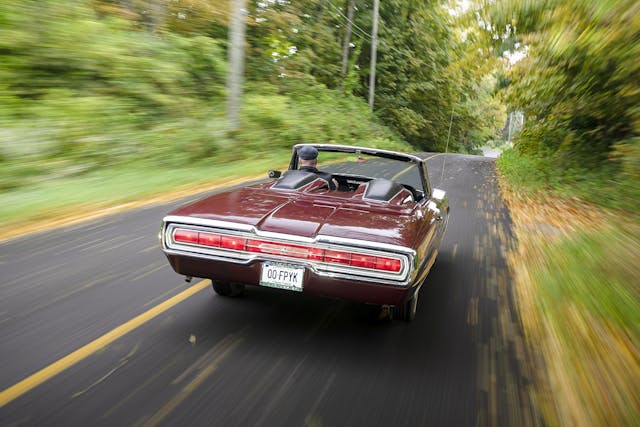
However, by the time Ford unveiled its 1966 Thunderbird, the fourth generation had hit its stride, making notable improvements where it counts. The base 390 engine added 15 more horsepower. Also available in ’66 was an optional 428 V-8, the powerplant under the hood of the car seen in these pages. With that engine, you get from a stoplight to 60 mph in just 9 seconds. Perhaps you’re not Chuck Yeager behind the wheel, but putting some speed on, nonetheless.
But this is the Flair Bird, so what you notice most when approaching the car is its style. A large Thunderbird greets you first, spread across the front grille. It’s a wow factor—much more so than the daintier Thunderbird lettering and smaller nose logos of the prior two years’ design. Our photo car is owned by Ron Campbell of Barkhamsted, Connecticut. It is a final-year convertible with lots of bells and whistles, including a dealer-optioned tonneau cover and an eight-track player, along with AC and power everything. Inside, the Thunderbird is a midcentury design study. There’s a gorgeous linear speedo readout nestled in the dash and little podlike gauges to inform the driver that all systems are optimal as you fly down the highway. The tilt-away steering wheel and sequential taillights are groovy, too. The long, sculpted fairings of the tonneau that marry the front seats into the back deck of this car, not unlike in a ’60s Indy racer, make it seem like you’re going that much faster.
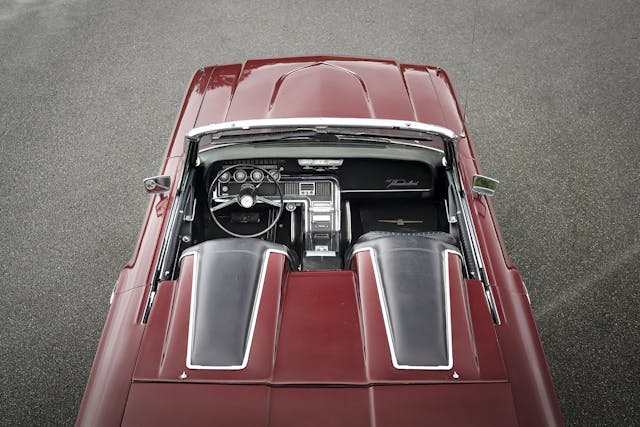
Trends say younger classic buyers (born sometime after Neil Armstrong landed on the moon) are interested in Flair Birds. They do have a hipper, more mod vibe than the earlier Thunderbirds. This generation wants something different from Dad’s old ’55 T-bird. Fond memories of watching Susan Sarandon and Geena Davis soaring one off a Grand Canyon cliff in the climactic final scene of Thelma & Louise can’t hurt. Or maybe it’s just that everyone dreams of being an early astronaut for a moment. This mid-’60s Thunderbird just might be the closest you’ll ever get, Major Tom. —Todd Kraemer
1964 Ford Thunderbird

Highs: Style for days in a number of configurations (coupe, convertible, sports roadster, town sedan, and landau); a comfortable ride; disc brakes!
Lows: Wallowing, softly sprung suspension; not a lot of get-up-and-go from a standing start.
Price Range: #1 – $56,400 #2 – $41,300 #3 – $27,400 #4 – $17,300
HAGERTY AUTO INTELLIGENCE SAYS:
Thunderbirds from this era have long lived in the shadow of two contemporary icons from Ford Motor Company—the Mustang and the Lincoln Continental. But as those cars have climbed out of reach, younger collectors have rediscovered the charm of midcentury luxury.
***
1997–02 Plymouth Prowler

In the auto industry, if you want to sell fun cars, first you’ve got to sell a bunch of not-fun cars to support your endeavors. A prime example of this reality is the Plymouth Prowler, one of the strangest fun cars ever to make it to the showroom floor. A four-wheeled love letter to the hot-rod scene, it was funded by the financial success of a trio of sedans from the Chrysler, Dodge, and Eagle brands. In the early 1990s, these shapely sedans (code-name: LH) helped the beleaguered Chrysler Corporation win back customers who had turned away from the automaker’s aging K-car lineup.
The only problem was that Chrysler’s fourth brand, Plymouth, was never given a version of the LH, and with sales stagnating, Chrysler execs wanted to give Plymouth a little love. They had learned from the 1989 Viper concept that a single auto-show debut could generate lots of media ink and showroom traffic, so company leaders cast about for another hit. A cadre of designers at Chrysler’s California styling studio had the idea for a hot-rod concept car, and the decision was made to bestow the razzmatazz on staid Plymouth.
“No mainstream car company had ever done anything this bizarre,” recalled Kevin Verduyn, one of the Prowler’s principal designers, in a 2018 Hagerty interview. The Prowler concept was the hit of the 1993 Detroit auto show, tangible evidence that Chrysler might be the smallest of the Big Three but also the bravest, the cheekiest, the most creative, and the automaker that knew how to do more with less.
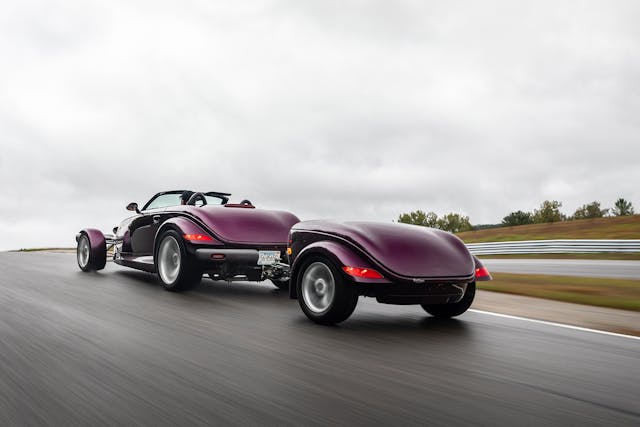
Even more amazing: Chrysler execs, led by president Bob Lutz and design chief Tom Gale, greenlighted the car for production. And yet the Prowler wasn’t just for kicks, as the project allowed Chrysler to delve into the emerging use of structural bonding adhesives as well as aluminum for castings, extrusions, body panels, and suspension parts. So, although the Prowler was clearly inspired by hot rods that used the 1932–34 Ford as their lodestar, it was, at least in terms of body structure, the most technically sophisticated automobile yet conceived by the Pentastar.
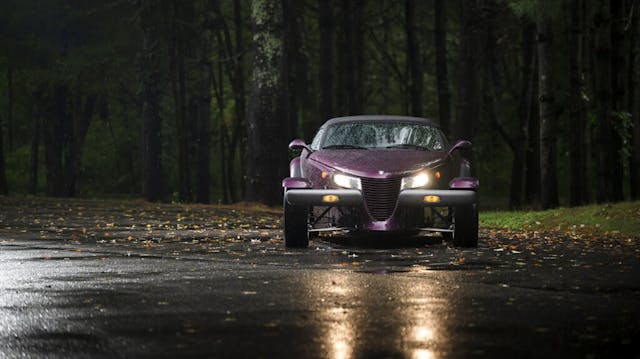
The situation under the production Prowler’s tapered hood was not nearly as advanced, since there was room only for the LH’s 214-hp, 3.5-liter SOHC V-6. The sole transmission was a lackluster four-speed automatic that dominated the Chrysler lineup. But under the direction of Gale, who at the time was himself building a hot rod based on a 1933 Ford, the designers got the look right, with the Bigs and the Littles (rear to front wheels), the cascading slit grille, the exposed front-suspension members, and the high-back styling. In an era of retro designs, it stretched the imagination.
Perhaps surprisingly, members of Gen X (born between 1965 and 1980) are now trickling into the Prowler, slowly supplanting the boomers who were the initial target when the car was conceived. Our low-mileage 1997 photo car, generously lent to us by Chris Santomero of West Harrison, New York, was in factory-fresh condition. Sure, we would rather have had a V-8, as the V-6 has not exactly grown on us over time. But the Prowler’s open-air charms, its unapologetic stance, its very existence, are all entirely worth celebrating. —Joe DeMatio
1997 Plymouth Prowler
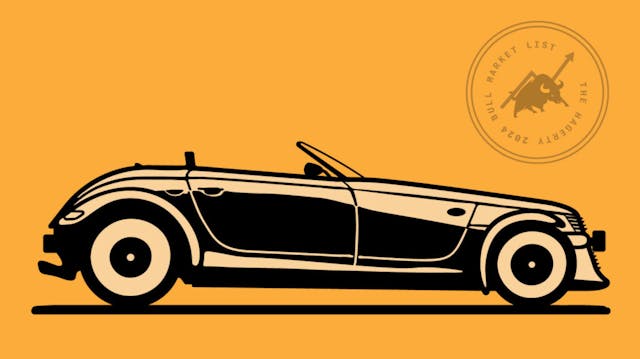
Highs: Sophisticated structural engineering; still highly affordable; optional trailer is bizarrely cool.
Lows: No V-8; no manual; interior is a little pedestrian; not especially rare, with 11,702 built 1997–2002.
Price Range: #1 – $45,500 #2 – $34,800 #3 – $29,200 #4 – $15,700
HAGERTY AUTO INTELLIGENCE SAYS:
So-called restomods (old cars with modern guts) are big business these days—customizers regularly charge six figures to fit a fuel-injected engine, disc brakes, etc., into an old rig. It’s only a matter of time before enthusiasts discover the Prowler, which is essentially a factory-built restomod offered at a bargain price.

Editor’s Note: As always, the 10 cars that make up the 2024 Bull Market List are those we believe are poised for growth. To arrive at these predictions, the Hagerty Automotive Intelligence team uses some of the most exhaustive data in the industry—price guide research, owner demographics, private sales, public auctions both online and in person, and import/export numbers. Our goal is to help you benefit from up-to-date research in order to make an informed purchase now and a profitable sale later.
***
Check out the Hagerty Media homepage so you don’t miss a single story, or better yet, bookmark it. To get our best stories delivered right to your inbox, subscribe to our newsletters.

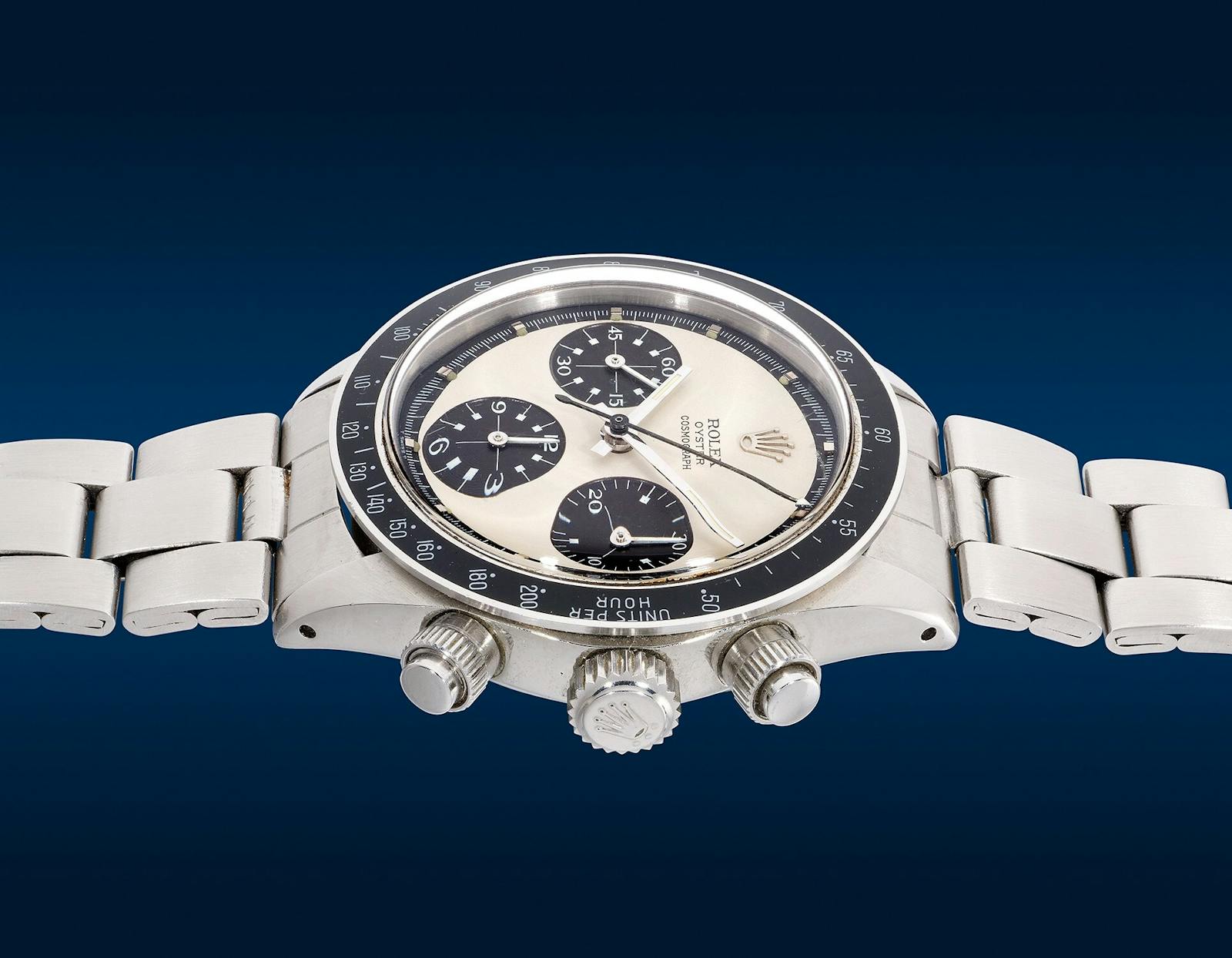
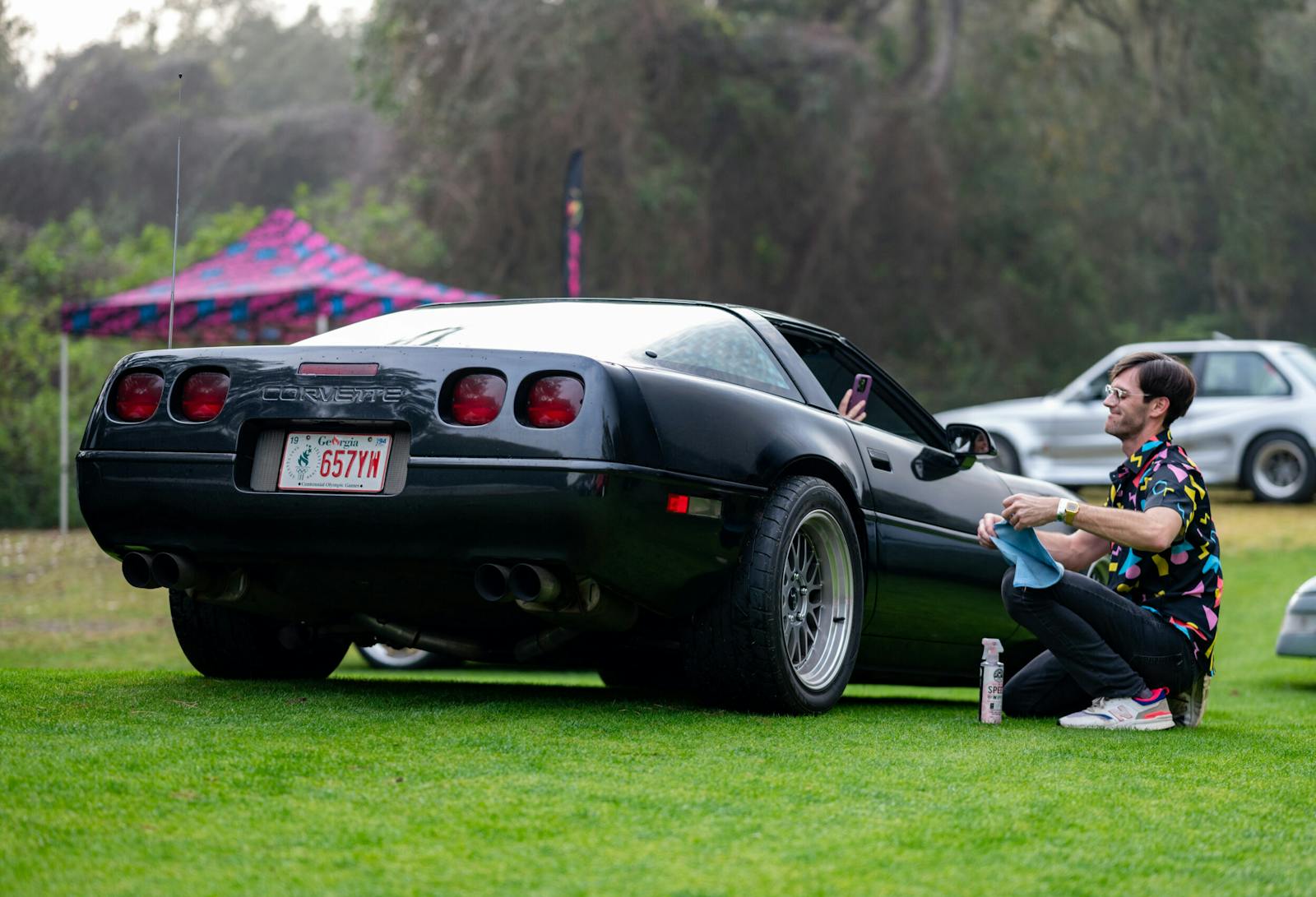
My fear is the mindless mandates for electric are going to hit collector car values hard at some point.
Prowlers are junk.
Mr Hagerty, you forgot to mention one of the lows with the 1964-1966 T-Bird design that the ventilation of the fuel tank has to be maintained especially on the drop tops or you can be driving a flame thrower down the road. Don’t know what it is with Ford always wanting to incenerate their customers. Though the 66 is an outstanding looking car with the top down.
It seems like this top 10 is a bit of the fantasy list. Not that pertinent to the average guy/girl. I know Haggerty asked for suggestions in an earlier article but if you really want cutting edge next 5-8 year fads go ask the car students at McPherson College Resto program located in central Kansas. I live a couple blocks from the college and I see all their neat daily drivers. That’s an indicator right there and then if you talk with them, those kids know what’s coming. They told me about the Marty McFly pickups being a big deal four years before it made the list here. I see the big long 8′ bed fullsize club cab pickups from the mid 80’s being a huge up and coming item. The students have three of those as daily drivers. I look forward to each years freshman class to see what new vehicles they bring. I park one of my old vehicles out front wrenching on it and a CARS student will normally stop by and talk. It’s just a neat location to live for a gear head.
3 months ago I bought a solid 2003 XKR convertible, Seafrost with Ivory interior, all service records, garage kept, zero issues, $10,400. / 95,000 miles. It’s my weekend driver & really has all I need, power, handling, styling, & comfort. Great wheels, Brembo Brakes, SS brake lines, active suspension, solid 6 speed auto with J gate, reliable Eaton Roots Supercharger, the list goes on and on. Least expensive performance car on the list. New with options $93K.
Eric, Glad you are happy. Lovely driving car.I owned.a 2003 fully loaded XKR for 15 ulyears, but I sold mine because it is easier to get many parts for my 1959 Jaguar XK150S than an ’04 XKR. Realise that neither Jaguar nor any 3rd party makes electronics including a BCM. Worst is the main CPU which is located within the instrument cluster and is unique to the XKR, diffrerent than the XK. I do suggest you always buy the best batttery money can buy as these are not happy with low voltage and operation of many systems like ABS become unpredictable. And when you take off the battery positive terminal, discharge it through a 2 ohm resistor. Never let it touch ground or you will fry the main cpu. Many cars from this era have failing electronics, but for others there are either replacements or used modules available. But little if any for the XKR.
In the wake of the first gen Bronco values over the past several years, the Jeep CJ8 would be the next classic off-roader poised to appreciate significantly. It seems current asking prices are already high but as with the Bronco, there may be no limit how high values can go. I’ve been a Jeep fan my whole life, to own a CJ8 is still a dream of mine but in the mean time I need to combine my daily driver with the vehicle I would love to have in my garage someday, hence my Jeep Gladiator.
We’ve owned and sold a 1997 Jaguar XK8 convertible, and a 2007 XKR convertible which we still own. Both were/are wonderful cars with era leading performance. We put 200K stunning miles on the ‘97 with only a few problems, and have only 35K on the flawless ‘07. Both were and are bargains at the time and still are today! The ‘97 – ‘06 engines have a weakness in the timing chain guides that can result in catastrophic engine issues, but a known solution is available. Also, that version has a ZF auto transmission fault common to numerous other vehicles using similar trans. Otherwise, beautiful, exhilarating, and under-valued enthusiast rides!
Miami Vice was a Ferrari Testerossa. Not a Lamborghini. Wrong at the get go.
These lists should always have “Honorable Mention” 1995-1996 C4 Corvette, base model.
the Countach’s dash box appears to be a cardboard box with leather covering, cobbled together like so many aspects of these cars. The words refined and Lambo don’t go together. Collectible? Yes.
However, you could still buy the new big block 454 with bucket seats, a center console and floor shifter.
My dad had a 454 Impala wagon and at 16 yrs old I had a lot of fun with that car especially at the stop lights with guys in their Mustangs and Cameros.
nothing here that i want you can keep em
It seems Hagerty’s BULL dun left the corral. Who ever wrote this article needs to come back to Earth.
For the hobbyist and those just wanting fun go with the old English cars, MGs and Triumphs, you can still find them cheap and parts available. They are simple and fun to drive. If you’re really looking for investments stick with something you really know about, stocks. Real estate etc. Do your own research. An older car should be your reward.
I have been looking for an XKR and was disappointed to find it on the list. The very reasonable prices may start climbing. Shame on you Hagerty! 😉
Here in Australia, the cat’s out of the bag (pun intended!).
No cheap XK8’s around here, mate.
Cheers & beers.
https://www.mecum.com/lots/1108056/2001-jaguar-xkr-silverstone-convertible/?aa_id=537872-0